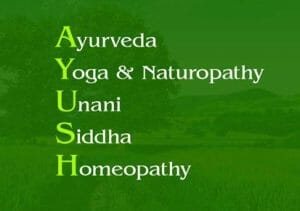
In June 2016, the World Health Organization (WHO) published a report titled the Health Workforce in India, which brought forth eye-opening statistics on the situation of healthcare in the country. It found that in 2001 nearly one-third of the practitioners calling themselves allopathic doctors were educated up to only secondary school level, while a whopping 57.3 percent did not have a medical qualification. Expectedly, this scenario was more distressing in rural areas where only 18.8 percent of the allopathic doctors had any medical qualification.
The report also suggests a huge skew in availability of doctors in favour of urban areas with the urban density of medical practitioners 4 times higher than rural. The document states that together, allopathic, ayurvedic, homeopathic and unani medical practitioners accounted for a strength of 79.7 doctors per lakh population in India.
While the WHO mandates a doctor-patient ratio of 1:1000, in India it is as low as 1:1674. More recent data by the Medical Council of India tells us that the total number of doctors in India as on September 30, 2014, was 9.32 lakhs. Apart from them, 6.8 lakh AYUSH (ayurveda, yoga & naturopathy, unani, siddha and homoeopathy) practitioners also practice across the country.
According to Rural Health Statistics 2014-15 of the Ministry of Health & Family Welfare, there is huge shortfall of doctors and specialists in the rural healthcare system. The report tells us that shortfall of allopathic doctors in primary health centres (PHCs) was 11.9 percent of the total requirement for existing infrastructure and even sanctioned posts were lying vacant in these remote facilities. There was huge shortfall of surgeons (83.4 percent), obstetricians & gynaecologists (76.3 percent), physicians (83 percent) and paediatricians (82.1 percent). Overall, there was a shortfall of 81.2 percent specialists at the community health centres (CHCs) vis-a-vis the requirement.
What’s shocking is that around eight per cent of the PHCs across rural India are running without a doctor. Primary health care deals with basic medicine, treatment of minor ailments, immunisation, child healthcare as well as natal and postnatal care. With little or no presence of private hospitals in rural areas, this leaves a large section of the rural population effectively without access to a doctor. In such circumstances, training AYUSH practitioners to fill the gaps in healthcare delivery at primary level can improve the doctor-patient ratio and provide the poorest masses in remote areas some medical assistance.
Some kind of ‘doctor’ is better than no doctor
The nearly 7 lakh AYUSH practitioners currently practicing in India already dispense basic medical care on a daily basis. In a country bedeviled by shortage of medical practitioners, they arguably provide some medical support to large swathes of populations deprived of healthcare facilities.
http://www.business-standard.com/content/b2b-pharma/pros-cons-of-integrating-ayush-doctors-into-modern-medicine-117010300630_1.html

Be the first to comment